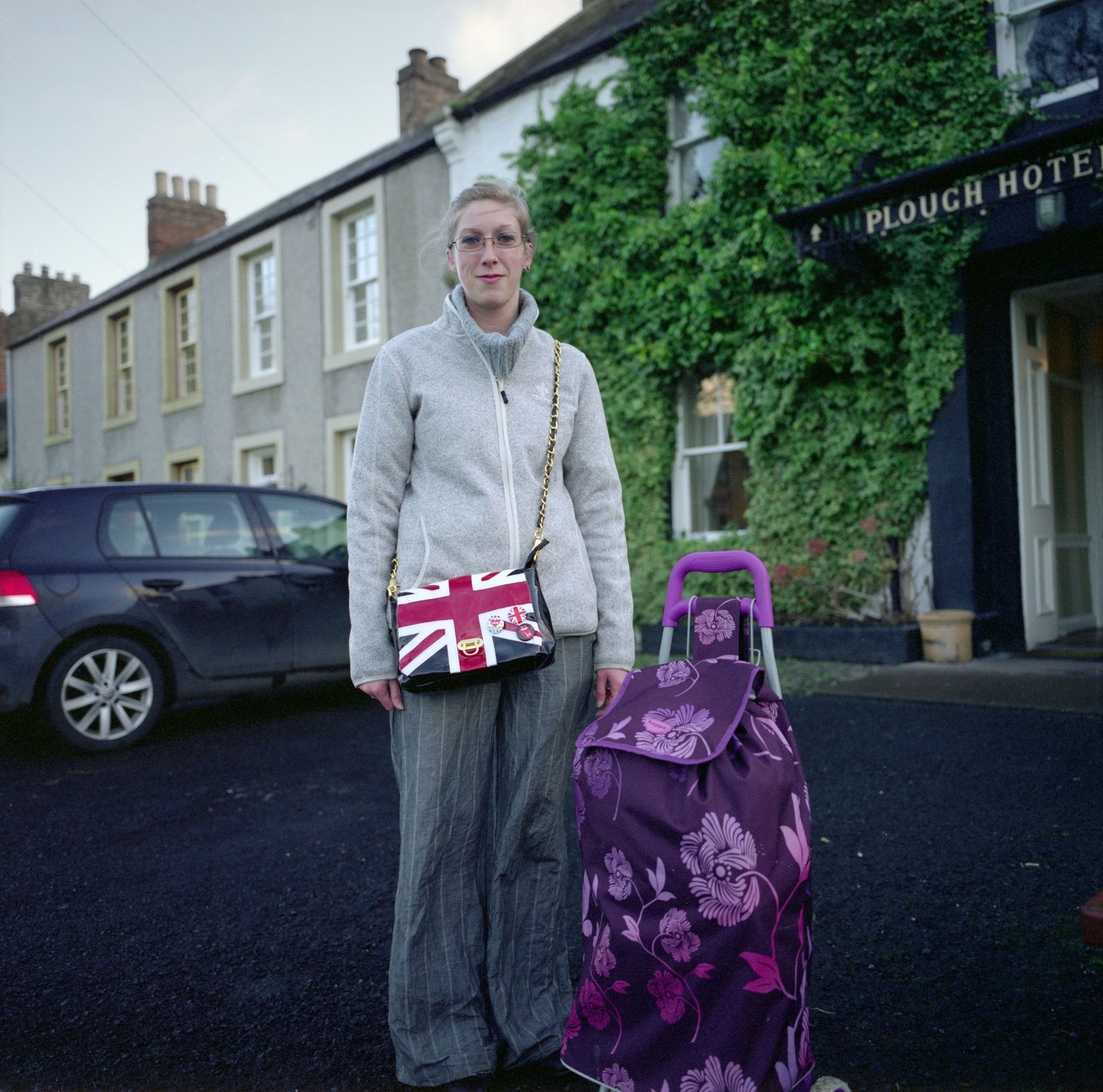Photographer Colin McPherson walked the Scottish border to meet the people pondering independence - and their view of England
McPherson, a Scot by birth who now lives on Merseyside, walked the length of the Anglo-Scots border on the Scots side from Gretna in the west to the Tweed just above Berwick, a distance of 96 miles, to see what could be seen

Politicians on both sides have been doing their utmost to inject passion into the debate on Scottish independence. And it is true that the issues involved are momentous, the decision a grave one, and whatever the result of September's referendum, it will resonate far into the future.
If the Scots go it alone, it could mean either a Golden Age of prosperity or a painful struggle to maintain existing standards. Hanging over the whole exercise, and beyond the power of politicians on either side to be sure about, is the question of membership of the EU, either separately or together.
So there is nothing either trivial or merely technical about the question of Scottish independence. Yet, as Colin McPherson's photographs bring out, it is quite unlike the struggles for independence in other parts of the world.
McPherson, a Scot by birth who now lives on Merseyside, walked the length of the Anglo-Scots border on the Scots side from Gretna in the west to the Tweed just above Berwick, a distance of 96 miles, to see what could be seen.
For much of the way, the landscape is piercingly beautiful, especially as the border climbs into the Cheviot Hills in the east. It is also very empty. In one photograph, the three-wire border fence stretches out into the empty grassland of the Cheviots. The countryside on both sides of the fence is identical.
Another haunting landscape shows the country where the last battle between the Scots and the English took place, the so-called Redeswire Fray of 1575, little more than a skirmish in which the English were routed after the Scots were bolstered by reinforcements from Jedburgh, up the road. As the final battle in a long series lasting many centuries, not to mention a Scots victory too, it would be no surprise to find commemorative plaques, perhaps a visitor centre, annual re-enactments. But there is nothing there at all – no human traces, no souvenirs of battle, only spreading grassland that looks like an accidental golf course, stands of Forestry Commission pines, and gentle heather-covered slopes beyond under cloud-dappled skies.
Only one of the images screams "border", and it's a picture of a cliché: at Carter Bar, a lone piper in a kilt tirelessly welcomes visitors as they come up on the A68 from Newcastle heading for Edinburgh. The other cliché in the series is the Union flag. A woman in Yetholm, on the Scots side, like all the photos in the series, carries a handbag with the flag emblazoned on it. When McPherson asked about its significance, she told him simply, "I love the bag, but it's no indication of my political opinions."
Contrast the fate of these places and these icons of identity with the fury and the bloodshed, right now, of other borderlines: Iraq-Syria, Ukraine-Russia, Pakistan-Afghanistan. Terrible things happened in our green land, too, things we have become good at forgetting – "a nation with so many memorials" as Geoffrey Hill wrote in his poem "The Triumph of Love", "but no memory". At Redeswire, there is not even a trace of a memorial.
Perhaps that is because the passions were stilled a very long time ago. The border McPherson walked was first legally recognised by both sides nearly 800 years ago, with the Treaty of York of 1237. The adjustments since, including some land around Berwick and a tranche of the North Sea, have been little more than footnotes, nothing to shed blood over. The status of the so-called Debatable Lands of the far west, near Gretna, plundered by "border reivers" from both sides, was ambiguous until joint action brought the lawlessness to a brutal end early in the 17th century. Despite the name, which stuck, the Debatable Lands are debated no more.
Since then, peace and forgetting have prevailed. Other countries – Kosovo, South Sudan, Kurdistan – struggle violently to break away from the big brother they loathe. But for Scotland and England, if the ways are truly to part, it will be more like one of those divorces of extremely old couples who, having long since passed through the phases of fury and disgust, have simply lost interest in each other. Thanks to devolution and the re-creation of Scotland's own parliament, more and more matters that have a bearing on Scots life are decided in Scotland by the Scots themselves. Meanwhile, the collective identity represented by the word "Britain" has steadily emptied of meaning and affection, until for many Scots there is nothing left in it that is not irksome and alien. And the Union flag is no more than a striking design.
'Beyond the Border' is at Impressions Gallery, Bradford, until 27 September (document scotland.com, impressions-gallery.com)
Join our commenting forum
Join thought-provoking conversations, follow other Independent readers and see their replies
Comments